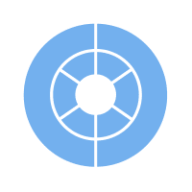Obsidian CDR enables security teams to focus on mitigating risks and threats and improving the security of their SaaS applications. The solution provides continuous visibility and powerful analytics to uncover, investigate, and respond to breaches and insider threats in SaaS applications quickly without causing business interruptions or slowing down business. The Obsidian CDR Platform data infrastructure is built with a deep understanding of how the APIs are structured, what data can be retrieved, and with what frequency. The Obsidian CDR Platform is capable of stopping even the most advanced attacks across SaaS and cloud services by using a unique identity-centric approach.
Obsidian CDR Features
Obsidian CDR has many valuable key features. Some of the most useful ones include:
-
Unified visibility and monitoring: Obsidian provides a clean, consolidated view of users, data, and applications in the cloud. With the solution’s unified visibility, you can control your inventory of users and access, you can take advantage of role mapping, and utilize the platform’s activity monitoring and third-party authorizations.
-
Cloud breach defense: Through the use of configuration and behavioral analysis and machine learning, Obsidian CDR can successfully generate alerts around breaches and insider threats. The Obsidian platform detects indicators of anomalous logins, SaaS persistence, data exfiltration, lateral movement, malicious insider activity, OAuth token abuse, and other threats.
-
Incident response: Obsidian provides quick searching, filtering, and export capabilities to give incident responders timelines and context. In addition, teams can remediate directly inside Obsidian to lock accounts, unshare files, remove mail forwarding rules, etc.
-
SaaS security posture management: Obsidian CDR populates recommendations to strengthen the security of cloud applications by removing stale accounts and fixing misconfigurations. The solution also enables security teams to detect configuration changes that weaken the security posture of applications, and observe when users are given additional privileges. Teams can also use the data to audit and report on compliance adherence.
Obsidian CDR Benefits
There are many benefits to implementing Obsidian CDR. Some of the biggest advantages the solution offers include:
-
Integration: Obsidian integrates with SaaS applications such as Salesforce, G Suite, Zoom, Microsoft Office 365, Dropbox, and Slack to automatically aggregate data about users, accounts, privileges, activity, and configurations.
-
Holistically monitor user activity: With Obsidian CDR, your organization can holistically monitor user activity across endpoints and SaaS apps. You can correlate users’ SaaS accounts with their endpoint devices in order to get richer context of user activity.
-
Defend against breaches and threats: By implementing Obsidian CDR, you can easily detect and proactively hunt for internal and external threats by discovering suspicious user behavior across SaaS accounts and devices.
-
Quickly respond to incidents: With Obsidian CDR, you can investigate and respond to breaches and incidents faster by pivoting to a pre-populated contextual view of user activity and alerts in both systems.
-
Strengthen security with risk monitoring: Obsidian CDR helps you Identify and mitigate risks and inappropriate activity to improve your organization’s security posture and prevent breaches.

